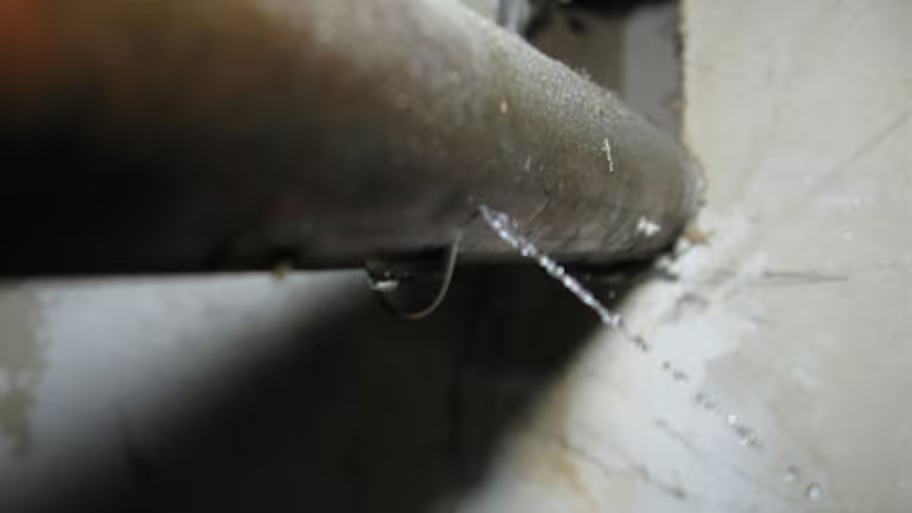Just about every person has their personal idea in relation to Common Water Leaks In House.

Leaks not only cause waste of water but can also cause unnecessary damages to your residence and also advertise undesirable organic growth. Water leakages may go undetected because many of the pipework in our home is hidden. By looking and also understanding for day-to-day scenarios that create leaks, you can safeguard your residence from future leakages and unneeded damages. Today, we will check out 6 leakage causes that may be triggering your pipelines to drip.
Intruding origins
The majority of water leaks start outside the house rather than inside it. If you discover an unexpected reduction in water stress, state in your tap, take some time to go out as well as examine your yard. You might notice wet patches or sinkholes in your backyard, and that might indicate that tree origins are attacking water lines triggering water to leak out. You can have your plumber check for intrusion, especially if you have trees or hedges near your property.
Corroded water supply
This could be the reason of staining or bending on your water pipelines. If our plumbing system is old, take into consideration replacing the pipelines since they are at a greater threat of deterioration than the newer versions.
Malfunctioning Pipeline Joints
The point at which your pipes connect is often the weakest web link in the waterline. Pipeline joints can degrade with time, causing water leaks. Regrettably, most of pipe joints are not quickly noticeable. If you have loud pipelines that make ticking or banging sounds, specifically when the warm water is activated, your pipeline joints are possibly under a great deal of stress. It is suggested to have your plumber inspect your system yearly.
Immediate temperature level changes.
Extreme temperature level changes in our pipes can trigger them to increase and acquire all of a sudden. This development and contraction may trigger splits in the pipelines, especially if the temperature are below freezing. If you maintained an eye on exactly how your plumbing works, it would be best. The existence of the previously pointed out scenarios often suggests a high danger.
Poor Water Connectors
At times, a leak can be triggered by loosened hoses as well as pipelines that provide your appliances. In situation of a water links leakage, you may discover water running directly from the supply line or pools around your devices.
Clogged Drains
Clogged drains may be aggravating and inconveniencing, but they can in some cases end up triggering an overflow causing rupture pipelines. Maintain eliminating any materials that may decrease your drains that can obstruct them to stay clear of such aggravations.
All the above are root causes of leakages but not all water leaks arise from plumbing leaks; some leaks may originate from roofing leaks. All leaks should be repaired immediately to avoid water damages.
Leaks not only create waste of water yet can likewise cause unneeded damage to your home and also promote unwanted natural growth. By looking and recognizing for daily situations that create leaks, you can shield your residence from future leakages as well as unneeded damage. Today, we will look at 6 leak creates that may be creating your pipelines to leak.
At times, a leakage can be triggered by loosened hoses as well as pipelines that provide your appliances. In situation of a water connections leak, you may observe water running directly from the supply line or puddles around your devices.
How To Check For Water Leak In Your Home
How To Check for Leaks
The average household's leaks can account for nearly 10,000 gallons of water wasted every year and ten percent of homes have leaks that waste 90 gallons or more per day. Common types of leaks found in the home are worn toilet flappers, dripping faucets, and other leaking valves. These types of leaks are often easy to fix, requiring only a few tools and hardware that can pay for themselves in water savings. Fixing easily corrected household water leaks can save homeowners about 10 percent on their water bills.
To check for leaks in your home, you first need to determine whether you're wasting water and then identify the source of the leak. Here are some tips for finding leaks:
Take a look at your water usage during a colder month, such as January or February. If a family of four exceeds 12,000 gallons per month, there are serious leaks.
Check your water meter before and after a two-hour period when no water is being used. If the meter changes at all, you probably have a leak.
Identify toilet leaks by placing a drop of food coloring in the toilet tank. If any color shows up in the bowl after 10 minutes, you have a leak. (Be sure to flush immediately after the experiment to avoid staining the tank.)
Examine faucet gaskets and pipe fittings for any water on the outside of the pipe to check for surface leaks.
Undetected water leaks can happen without the home or business owner even realizing. If you suspect a water leak, but not able to find the source. It is time to contact a professional water leak detection service, The Leak Doctor.
How To Find a Water Leak In Your Home
https://www.leakdoctor.com/blog/How-To-Check-For-Water-Leak-In-Your-Home_AE197.html

We are very curious about How to Find Water Leaks and I'm hoping you enjoyed the new blog post. Sharing is good. Helping others is fun. Thank you for your time invested reading it.
See Availability